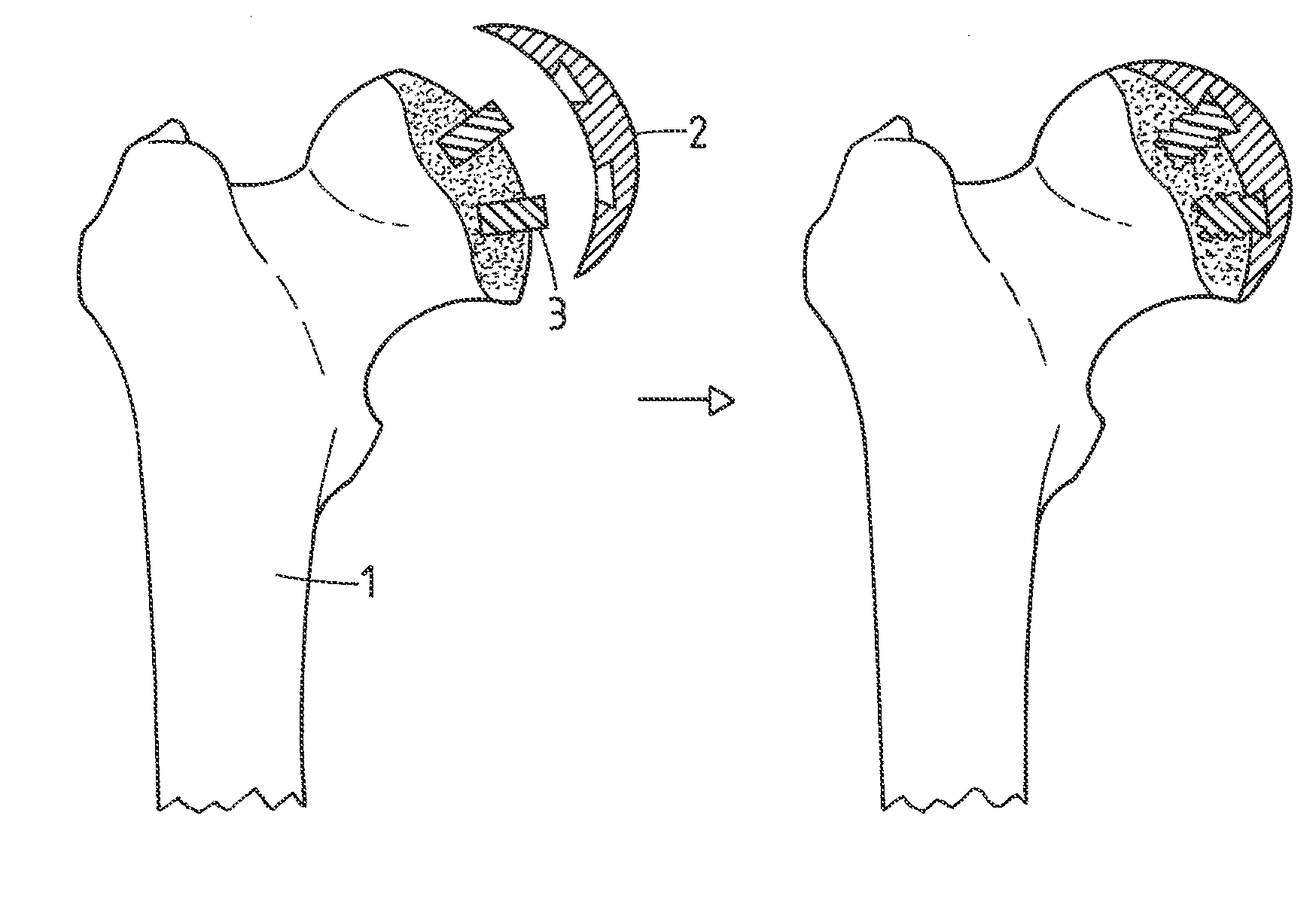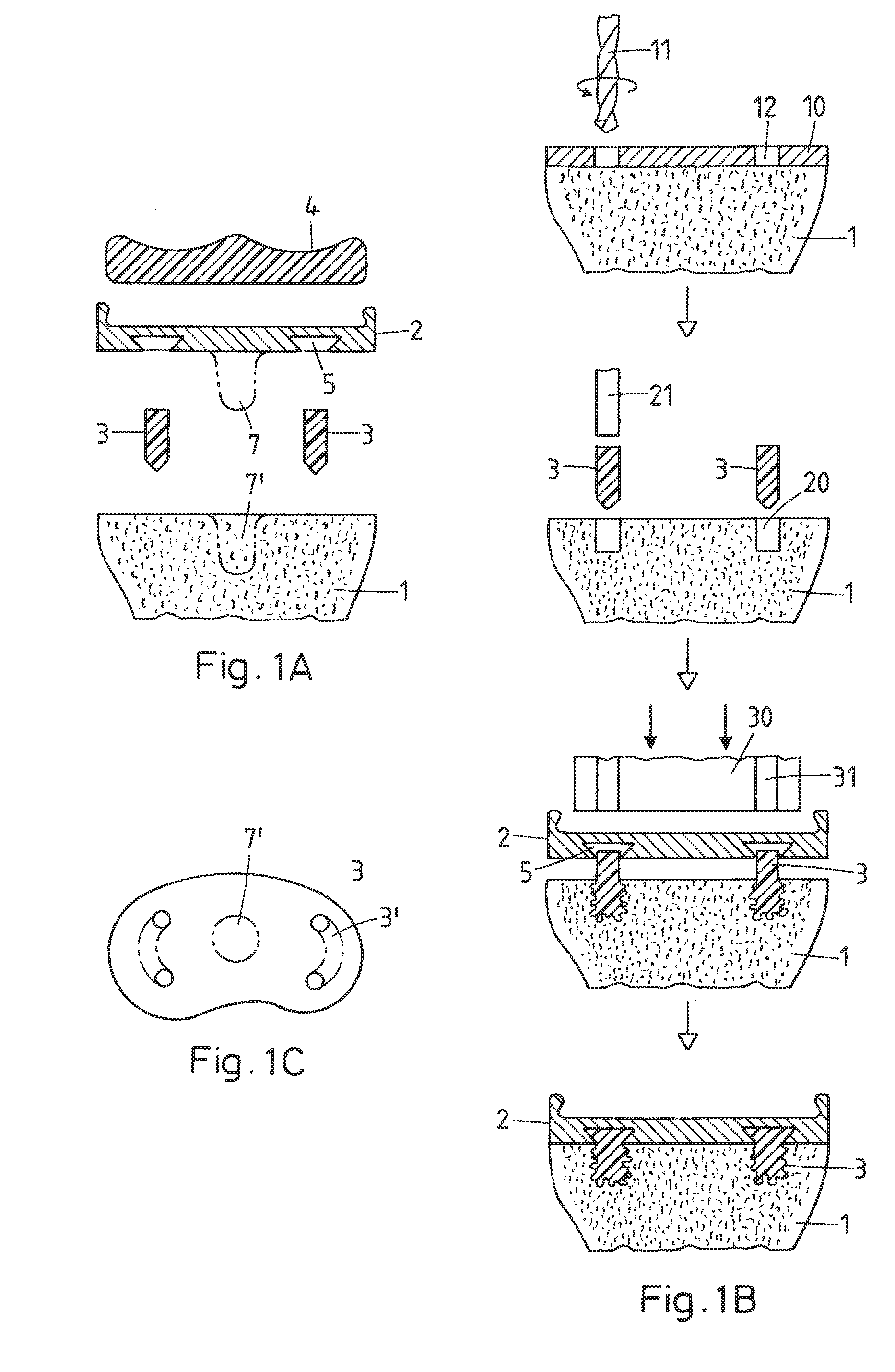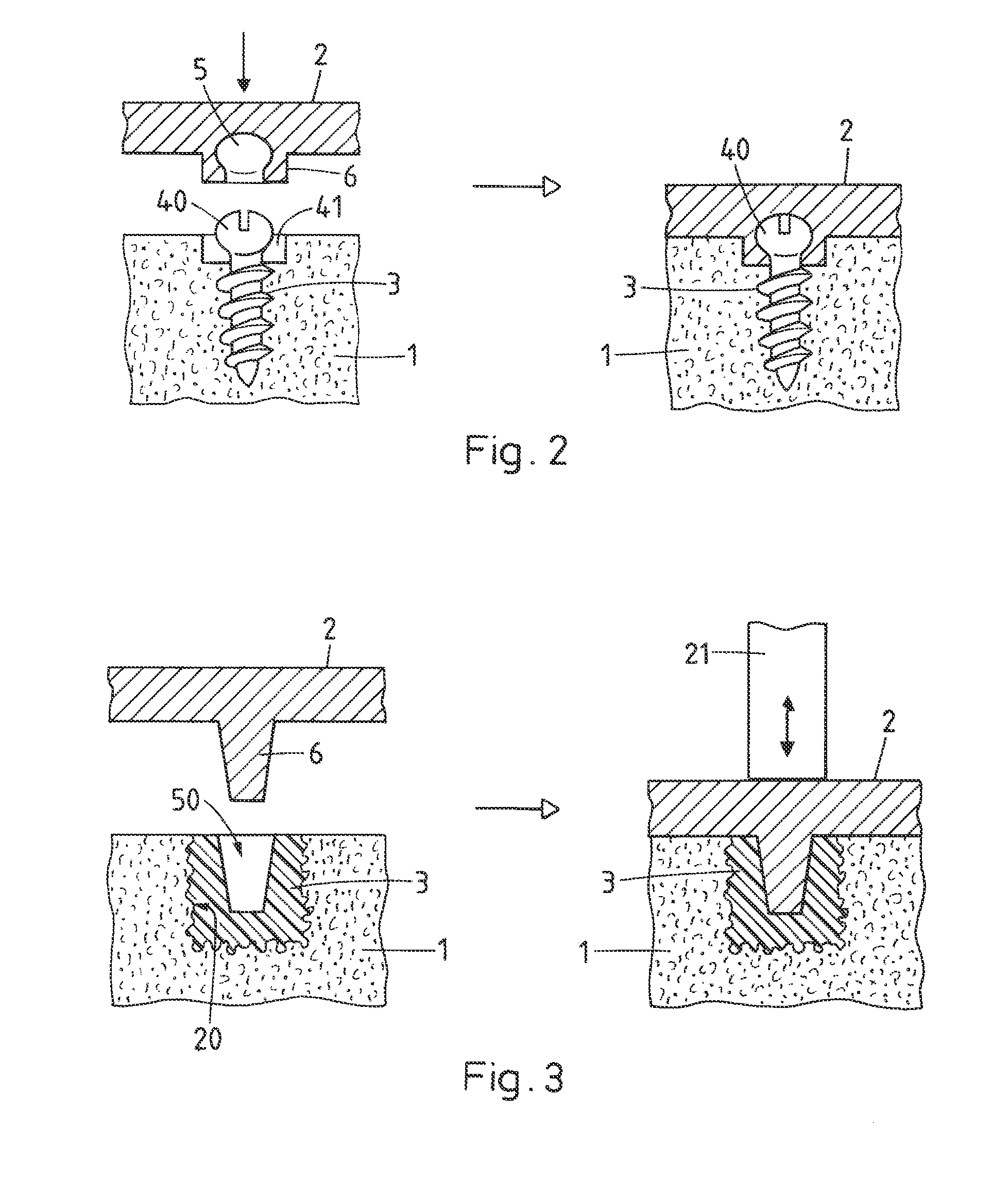Method for fastening an implant to bone tissue and corresponding implant system
a technology of bone tissue and implants, applied in the field of medical engineering, can solve the problems of reducing the lifespan of bearing elements, additional space, and inability to apply universally, and achieve the effect of limited accuracy
- Summary
- Abstract
- Description
- Claims
- Application Information
AI Technical Summary
Benefits of technology
Problems solved by technology
Method used
Image
Examples
Embodiment Construction
[0025]FIGS. 1A, 1B and 1C illustrate a first exemplary embodiment of the implant system and of the method for fastening the implant according to the invention. These Figs. illustrate the resurfacing of a tibia plateau (articulating surface) as an exemplary application. As already mentioned above, implant and method according to the invention are not only suitable for the resurfacing of a tibia plateau but essentially for any replacement of an articulating surface of a human or animal joint, wherein each specific application requires a corresponding adaptation of the implant regarding, in particular, shape and design of the joint side and a corresponding adaptation of the fasteners regarding number, dimensions and positions in relation to the bone and the implant. The named adaptations can be carried out by one skilled in the art without any problem. Implant and method as illustrated in FIGS. 1A to 1C are also suitable for supporting or stabilizing bones (e.g. after a fracture), wher...
PUM
 Login to View More
Login to View More Abstract
Description
Claims
Application Information
 Login to View More
Login to View More - R&D
- Intellectual Property
- Life Sciences
- Materials
- Tech Scout
- Unparalleled Data Quality
- Higher Quality Content
- 60% Fewer Hallucinations
Browse by: Latest US Patents, China's latest patents, Technical Efficacy Thesaurus, Application Domain, Technology Topic, Popular Technical Reports.
© 2025 PatSnap. All rights reserved.Legal|Privacy policy|Modern Slavery Act Transparency Statement|Sitemap|About US| Contact US: help@patsnap.com



